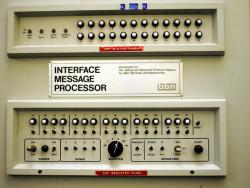In 1942, University of California, Davis (UCD) biologist, Jack Hanna recognized the need for breeding tomato varieties that ripen uniformly and withstand the rigors of mechanical harvesting. In 1949, UCD agricultural engineer Coby Lorenzen and Hanna began developing a mechanical tomato harvester. Parallel efforts by others, notably those started in 1957 by agricultural engineer Bill Stout and horticulturist Stan Ries of Michigan State University, eventually resulted in several different harvesting mechanisms. In the late 1950s, UCD agricultural engineer Steven J.
CA
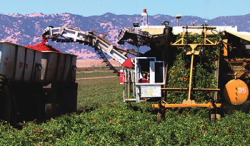
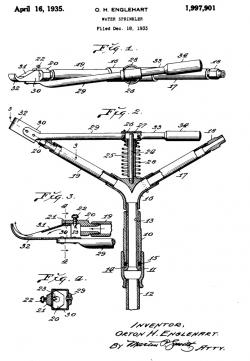
The Rain Bird horizontal action impact drive sprinkler head was invented in 1933 by Orton Englehardt, a citrus grower and native of Glendora. The design offered slow rotation and uniform watering, benefits long sought by local irrigators. Clement M. LaFetra, a friend of Englehardt, urged early patent application. A patent was awarded on December 18, 1933. Englehardt, with no entrepreneurial aspirations, assigned all rights to LaFetra and his wife Mary Elizabeth. Production began in the LaFetra family barn on October 13, 1935.
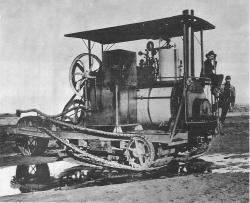
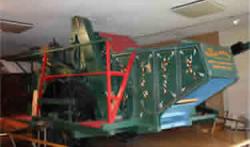
The Sidehill Combine Developed By The Holt Brothers At Stockton, California In 1891, A Significant Milestone In Grain Harvesting And Agricultural Efficiency That Opened New Land For Wheat Farming, Is Designated A Historic Landmark Of Agricultural Engineering By The American Society Of Agricultural Engineers 1982
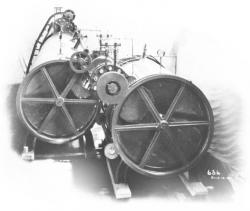
The Food Canning Industry Was Revolutionized In 1920, When The Continuous Rotary Pressure Sterilizer Was Introduced By Albert R. Thompson. Thompson Was Chief Engineer For The Anderson-Barngrover Co. Of San Jose, California, Now The FMC Corporation. The Sterilizer Cooked Canned Products Uniformly Under Pressure For Short Period At High Temperatures, Then Quickly Cooled Them Under Pressure To Prevent Swelling Or Bursting. It Operated Continuously At Speeds Of Up To 400 Cans Per Minute.
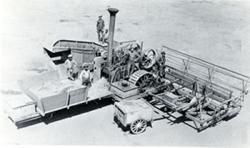
George Stockton Berry (1847-1917) of Lindsay, Tulare County, California designed, built, and in 1886, operated the first self-propelled combine. He was granted a U.S. Patent (# 374,339) in1887. The Berry design embodied the following "firsts":
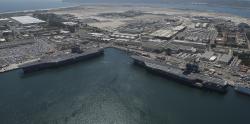
Known as the birthplace of Naval Aviation, North Island was the site of the first successful seaplane flight and the first amphibious flight in the U.S., both made by Glenn Curtiss. The first Naval pilot, Lt. T.G. Ellyson, was trained here at the Curtiss Aviation Camp. A flight school established here by Ellyson trained the next Naval aviators as well as the Navy’s first aviation maintenance personnel. North Island was also the site of the first night flight, and the home of the first aircraft carrier, the USS Langley.
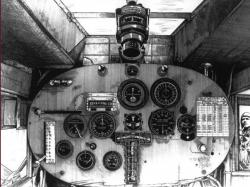
On this site, which was the Dutch Flats Airport, Charles A. Lindbergh made the first flight of his Spirit of St. Louis airplane, constructed in 60 days by dedicated employees of Ryan Airlines, Inc. The 20-minute flight on 28 April 1927 was witnessed by those who built the aircraft. Lindbergh describes the flight:
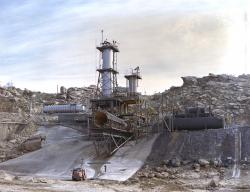
On 15 November 1950, the SSFL conducted its first official test with a Rocketdyne-designed XLR43-NA-1 large liquid propellant rocket engine, which later became the Redstone engine. Encompassing 2558 acres, 18 large static test stands, 5 component test laboratories and an advanced test facility, the SSFL and its dedicated employees have provided significant contributions to U.S. rocketry and space programs for over 50 years.
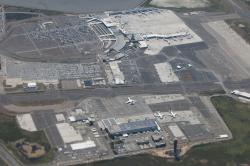
This site, formerly known as Oakland Municipal Airport, served as the gateway to the Pacific during aviation’s pioneering age of trans-Pacific flight. Among other notable events, Albert Hegenberger and Lester Maitland departed from the airfield on 28 June 1927 on the first flight from the mainland to Hawaii, and Amelia Earhart landed here on 13 January 1935, completing the first-ever solo flight from Hawaii to the mainland.
Innovations
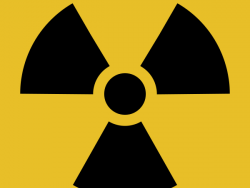
Founded in 1957, Raychem Corporation was the first company to successfully apply the new science of radiation chemistry to commercial use. This accomplishment led to the creation of tough new materials and high-performance products such as irradiated polyethylene insulated wire and heat-…
Read More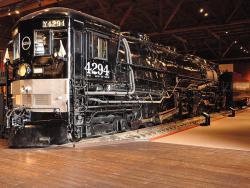
The articulated wheel-base steam locomotive represents the final phase of steam locomotive development in size and power. The cab-in-front feature was widely used by the Southern Pacific Railroad beginning in 1909 to alleviate smoke and heat problems for locomotive personnel en route through…
Read More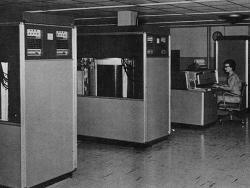
The IBM 350 disk drive storage development led to the breakthrough of on-line computer systems by providing the first storage device with random access to large volumes of data. Since its introduction on September 4, 1956, it has become the primary computer bulk-storage medium, displacing…
Read More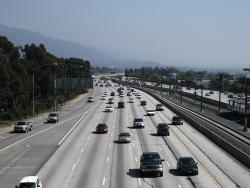
With its landscaped embankments, limited access, and depressed roadway, Arroyo Seco Parkway (now known as the Pasadena Freeway) became the prototype of the Los Angeles freeway system. Motorists enjoy a scenic drive featuring landscaped embankments lush with native chaparral. The curving…
Read More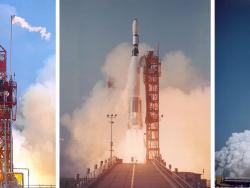
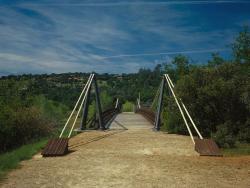
Soon after gold was discovered at Sutter's Mill near Sacramento in 1848, General John Bidwell found gold near the Middle Fork of the Feather River. His discovery brought hordes of miners to the scene and Bidwell Bar was born. The Bidwell Bar Suspension Bridge over the Feather River was one of…
Read More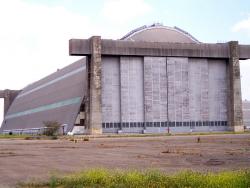
All building materials were made fire-resistant to protect against incendiary bombing. Treatment involved a vacuum process of salt impregnation. During construction, high winds caused a partial collapse of some members. The ruined materials were piled for incineration, but would not burn; so the…
Read More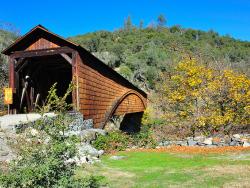
A product of the Northern California Gold Rush, the Bridgeport Covered Bridge is believed to be the longest, single-span, wooden covered bridge in the United States. Crossing the south fork of the Yuba River at a span of 233 feet, the bridge was built by the Virginia City Turnpike Company as…
Read More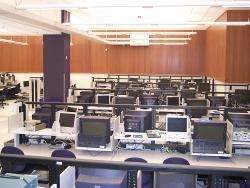
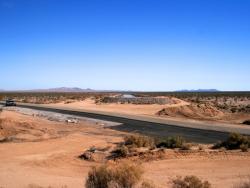
Stretching 242 miles from the Colorado River on the California-Arizona border to its final holding reservoir near Riverside, California, the Colorado River Aqueduct consists of more than 90 miles of tunnels, nearly 55 miles of cut-and-cover conduit, almost 30 miles of siphons, and five…
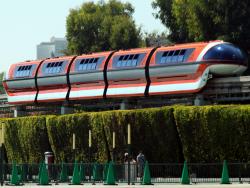
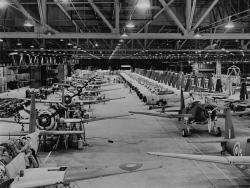
Established in 1929, and owned by several different aviation companies through its history, the Downey site was the design, test, and production site for various airplanes and spacecraft that defined American aerospace accomplishments in the 20th century. Its rich legacy includes the P-51…
Read More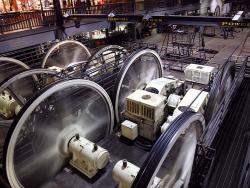
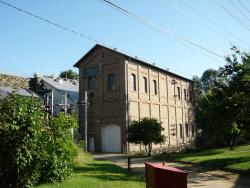
The historic Folsom Power House #1 marks one of the first successful uses of hydroelectric power in the world and the first successful transmission of power long distance (twenty-two miles to Sacramento). The old Folsom Power House still shelters the machinery generated to drive streetcars and…
Read More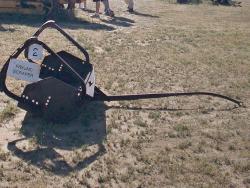
The Fresno scraper established the basis for the modern earthmoving scraper, being able to scrape and move a load of soil, then discharge it at a controlled depth. It quadrupled the productivity of manual labor, replacing hand shoveling of earth into horse carts.
James Porteous, a…
Read More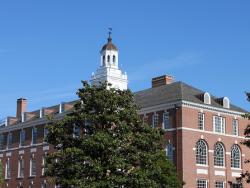
Gilman Hall, built in 1916-1917, accommodated a growing College of Chemistry by providing expanded research and teaching facilities for faculty and students specializing in physical, inorganic and nuclear chemistry. Work performed at Gilman Hall helped advance the fields of chemical…
Read More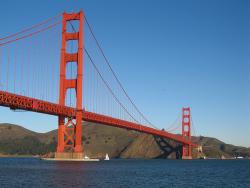
Put in service in 1937, this world-renowned bridge, conceived by Joseph Strauss and designed largely by Charles Ellis, was the longest single span (4,200 feet) in the world for a quarter century.
As with many civil engineering projects in their conceptual stages, naysayers scoffed at the…
Read More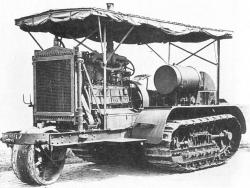
The first practical demonstration of this tractor took place in a peat field on Roberts Island on November 24, 1904, and was patented and in production by December of 1907. The existing machine represents the earliest gasoline-powered track-type tractors that were to help revolutionize…
Read More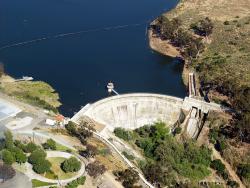
When completed in 1888 to a height of 90 feet, Sweetwater Dam was once the tallest masonry arch dam in the United States, and it led to many others of the same basic design. The original construction began in November 1886 under the direction of Frank E. Brown (civil engineer for Bear Valley Dam…
Read More